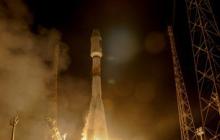
On September 10th two additional Galileo satellites (FOC-M3 and SAT 9-10) were successfully launched into orbit from the European Space Centre in Kourou, French Guiana. Speaking at the launch, GSA Executive Director Carlo des Dorides discussed how the GSA will help ensure these new satellites translate into valuable services for the end user.
“While this launch is an impressive accomplishment, in the end Galileo is about more than designing, manufacturing and launching satellites,” he said. “The ultimate objective is to translate satellite signals into valuable, reliable services for European citizens.”
Keeping the Focus on the User
The GSA was delegated the responsibility for the Galileo service provision by the European Commission. Within this role, the Agency is tasked with ensuring that the end user remains at the centre of Galileo. To achieve this, the GSA is in constant dialogue with user communities via a wide range of activities.
The Agency also works closely with chipset and receiver manufacturers to ensure all products are Galileo-capable and ready in time when Galileo is deployed. In terms of R&D, the Agency has and continues to support numerous GNSS projects via the Horizon 2020 and, previously, the FP7 funding programmes. Speaking of R&D, des Dorides noted the recently launched Fundamental Elements, which dedicates approximately EUR 100 million to R&D aimed at advancing European GNSS chipset and receiver technologies. Des Dorides noted that the service provision task will not be easy. “Other systems are already operational and, in particular GPS is a de facto standard,” he said. “Nevertheless, we are committed to making Galileo the world’s second GNSS reference system by 2020, this is our goal.”
The GSA approaches this challenge with a strong track record and experience from its work with EGNOS, where it has been responsible for the programme’s service provision for the past two years. During this time, the Agency has supported the uptake of EGNOS to benefits a wide range of users. Today over 150 airports have EGNOS-based approaches, EGNOS-based precision farming benefits over two-thirds of European tractors and EGNOS is the standard for mapping and surveying in Europe. In addition interest in EGNOS from areas such as maritime and rail is growing steadily which is a positive trend for EGNOS service provision.
Ensuring a Secure System
Along with Galileo service provision, the GSA is also charged with providing a secure system. In this role, the GSA supports the EU GNSS Security Accreditation Board as an independent body within the Agency. It also provides security oversight and requirements for the GSA infrastructure, coordinates the development, adoption and trials of the Public Regulated Services (PRS) by the Member States, and advises the European Commission on matters of security in relation to EU
GNSS programme contracts and related security risks.
Via the Galileo Security Monitoring Centre (GSMC), the GSA will also provide around-the-clock monitoring and security response to all EU GNSS programmes. In this role, it will also provide instructions to the Member States regarding the control and management of their PRS user segments.
A Big Step Forward
According to des Dorides, the September 10th launch represents another big step forward for space-based services in Europe. “Tonight the entire European space community takes pride in the successful addition of two more Galileo satellites to the constellation,” he said. “For the GSA, this launch brings us one step closer to providing valuable, highly-accurate, reliable and secure European satellite navigation services to the world.”
More Information
Media note: This feature can be republished without charge provided the European GNSS Agency (GSA) is acknowledged as the source at the top or the bottom of the story. You must request permission before you use any of the photographs on the site. If you republish, we would be grateful if you could link back to the GSA website (http://www.gsa.europa.eu).